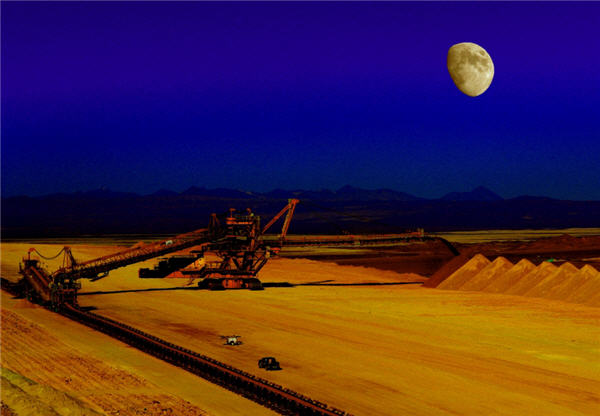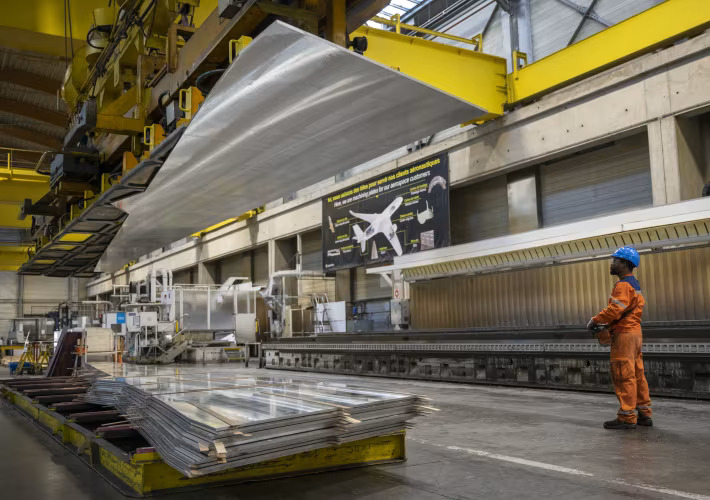Surplus melting away? Codelco says output to drop 5%

Bad moon rising? Codelco’s Radomiro Tomic
Shipments of refined copper will decrease 5% with sales to all markets, including China, affected Rodrigo Toro, corporate sales vice president of Chile’s Codelco, told Bloomberg in an interview:
“We cannot continue selling the same amount, as we have less. Not only to China, not only to Asia. We are selling less to the world.”
State-owned Codelco, struggling with aging mines and depressed copper prices, is receiving a $4 billion injection from Santiago and is also planning to sell about $8 billion of bonds over the next five years to help finance a $29bn investment program to maintain its status as the world’s biggest copper producer.
Codelco’s annual production of some 10% of the global total has been dwindling in recent years as the company struggles with depleting resources at ever lower grades coupled with rising costs as expansion projects require huge economies of scale to handle the increased tonnage required.
The news will be welcomed by the industry facing a market surplus in 2015 after five years of deficits and a double digit slump in the price this year.
An economic slowdown in China to growth rates last seen in the 1990s has put in doubt the strength of future demand from the consumer of 45% of the globe’s red metal.
But the copper price has mainly come under pressure due to increased supply. An October report by metal consultancy GFMS predicts over the next six months, more than a million tonnes of new copper capacity, or around 6% of global mine production, will come on stream.
SEE ALSO: Copper mining has a dirty problem
New mines in Peru, led by China Minmetal’s $6 billion Las Bambas project, coming on stream next year and in 2016 will double production to 2.8 million tonnes, placing the South American nation in second place globally behind Chile.
Other significant projects include First Quantum’s Sentinel project in Zambia which will add 300,000 tonnes starting this year, Southern Copper Buenavista expansion in Mexico will add 170,000 tonnes next year while the KGHM-Sumitomo Sierra Gordon project kicked off production of 220,000 tonnes per annum earlier this month.
A research note released last week from Goldman Sachs cuts the investment bank’s outlook for the copper price and warns even the reduced prediction could turn out to be too optimistic.
Over the next six months Goldman expect copper to trade at $6,200 a tonne (some $2.80 a pound) down from earlier estimates of $6,600. The bank also cut its 12-month outlook to $6,000 a tonne ($2.72 a pound) from $6,200.
Other analysts are not so pessimistic pointing to a long history of supply disruptions in the industry. In a recent report by independent researcher Capital Economics argues that “aside from the more typical disruptions associated with adverse weather, technical problems, power shortages or labour activity, additional constraints on mine output in 2015 may be the fall in copper prices this year and rising mine costs”:
For now, the copper price is still higher than average mining costs and there will be some additional relief (in some locations) provided by the recent drop in energy prices. However, lower copper prices could constrain companies’ ability to raise wages. This in turn suggests that the annual wage negotiations, many of which are starting around now, will prove more disruptive than in recent years. The lower price environment and concerns about future demand (given slower growth in China), may also make financing mine development more difficult and expensive.
Capital Economics therefore sees copper mine supply to grow by a more modest 2–4% this year and “although the market is likely to be in surplus, it will not be sufficiently large to provide an ample cushion against disruption.” The analyst firms prices to recover from recent lows of around $6,600 per tonne to at least $7,200 or $3.25 a pound by end-2015.
{{ commodity.name }}
{{ post.title }}
{{ post.date }}




Comments
Zulugroove
Aside from the Codelco piece the rest of this is old news. I prefer to focus on the positive ..and look at the possibility of China’s move to consumerism, as apposed to construction and expansion, as the main support to the copper price moving forward. It would be nice for someone to look into and report on that angle, instead of flogging a dead hoarse with supply nonsense all the time, it’s like analysing the movement in daily gold prices!